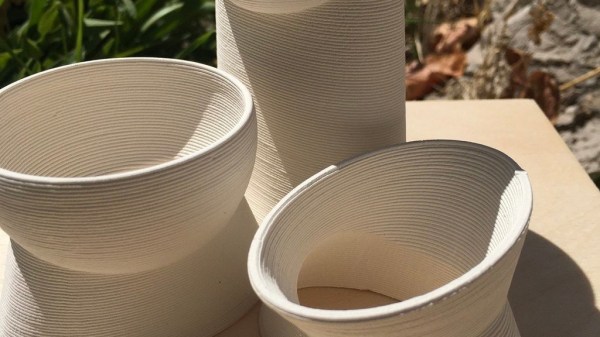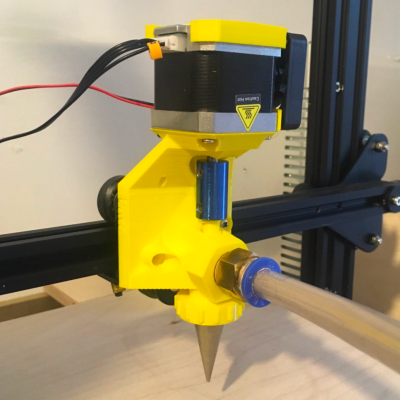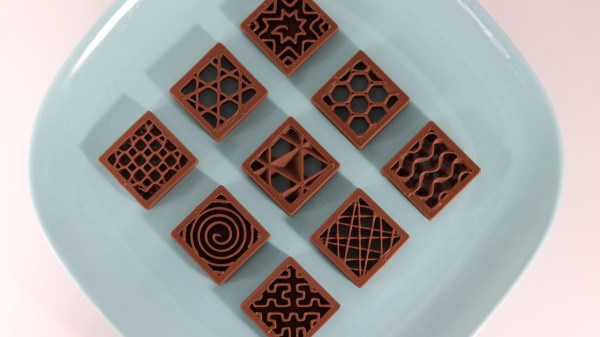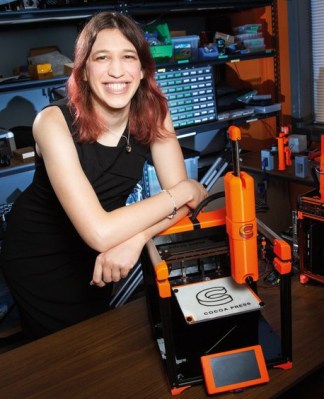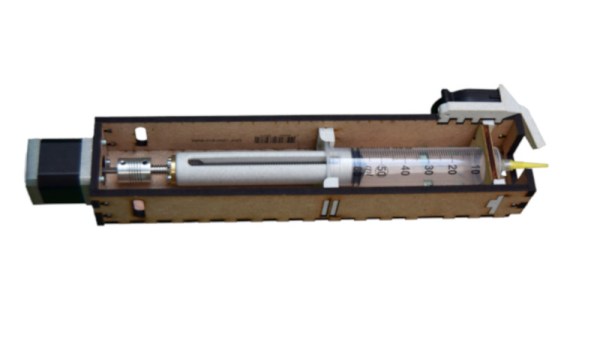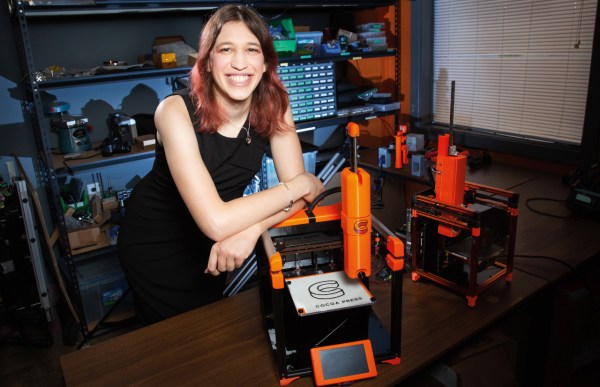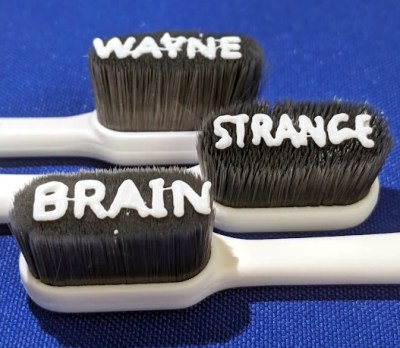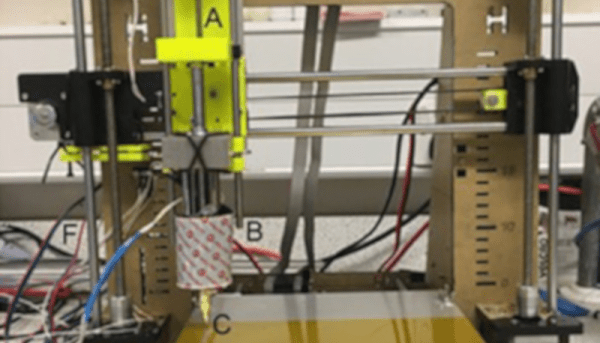In contrast to the success of their molten-plastic cousins, paste extrusion 3D printers have never really attained much popularity. This is shame because, as the [Hand and Machine] research group at the University of New Mexico demonstrate, you can use them to print with some really interesting materials, including glass and eggshell. Links to the respective research papers are here: glass and eggshells, with presentations in the supplemental materials.
To print with glass, the researchers created a clay-like paste out of glass frit, methyl cellulose and xanthan gum as shear-thinning binders, and water. They used a vacuum chamber to remove bubbles, then extruded the paste from a clay 3D printer. After letting the resulting parts dry, they fired them in a kiln at approximately 750 ℃ to burn away the binder and sinter the frit. This introduced some shrinkage, but it was controllable enough to at least make decorative parts, and it might be predictable enough to make functional parts after some post-processing.
Path generation for the printer was an interesting problem; the printer couldn’t start and stop extrusion quickly, so [Hand and Machine] developed a custom slicer to generate tool paths that minimize material leakage. To avoid glass walls collapsing during firing, they also wrote another slicer to maintain constant wall thicknesses.
The process for printing with eggshell was similar: the researchers ground eggshells into a powder, mixed this with water, methyl cellulose and xanthan gum, and printed with the resulting paste. After drying, the parts didn’t need any additional processing. The major advantage of these parts is their biodegradability, as the researchers demonstrated by printing a biodegradable pot for plants. To be honest, we don’t think that this will be as useful an innovation for hackers as the glass could be, but it does demonstrate the abilities of paste extrusion.
The same team has previously used a paste printer to 3D print in metal. If you don’t have a paste printer, it’s also possible to print glass using a laser cutter, or you could always make your own paste extruder.


